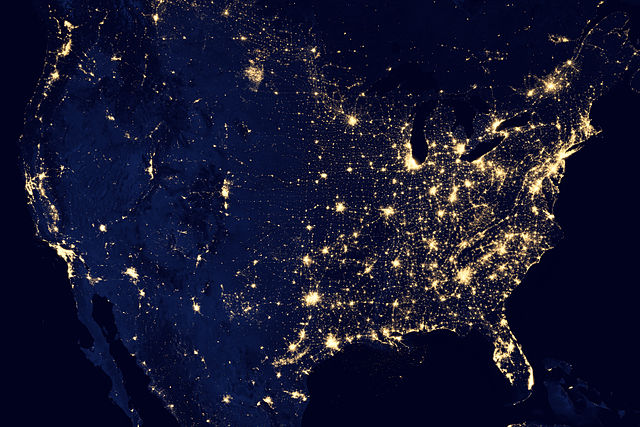
Emissions are rising at the same rate as renewable energy in the US, and here’s why.
According to a report that was released on January 10 by the Rhodium Group, greenhouse gas (GHG) emissions in the United States increased by 1.3% in comparison to 2021. This is in spite of an increase in renewable energy.
GHGs like carbon dioxide, methane, and nitrous oxide keep some of the Earth’s energy from leaving the planet and keep heat in the atmosphere. The excessive heat may alter global climate and weather patterns, intensifying hurricanes and increasing droughts, among other devastation. To avoid some of the most devastating effects of climate change in the future, it is necessary to reduce the amount of greenhouse gases released into the air.
“While this is the second year in a row that emissions have increased, it nonetheless marks a change from 2021, when emissions rebounded faster than the economic growth rate,” the group wrote in a statement. “This reversal in 2022 was largely due to the substitution of coal with natural gas—a less carbon-intensive fuel—and a rise in renewable energy generation.”
Even though renewable energy sources like wind, solar, and hydropower produced 22% of the country’s electricity, compared to coal’s 20%, the report found that this was not enough to slow the rise in emissions.
This new estimate shows that emissions have continued to rise from lows when the COVID-19 pandemic started in 2020. During the initial virus outbreaks, emissions dropped by more than 10%, but they rose by 6.2% in 2021.
Rhodium was concerned about the economy in 2022 because of the challenges, uncertainty, and an increase in the price of oil and natural gas as a result of Russia’s invasion of Ukraine.
Emissions from homes and businesses increased the most in 2022. These spaces consume petroleum products, for example, flammable gas in machines like high temp water radiators and heaters. These areas’ emissions increased by 6% and returned to pre-pandemic levels. As a possible explanation for the increase, the report suggests that colder-than-average temperatures at the beginning of 2022 will increase heat use.
This rise puts the United States of America further away from its targets for reducing emissions. By 2030, President Biden aimed to cut greenhouse gas emissions by at least 50% below 2005 levels. this amount, which is thought to be in line with keeping global warming to the Paris Agreement’s limit of 2.7 degrees Fahrenheit. The US is not on track to achieve this goal, according to Rhodium’s analysis. The Inflation Reduction Act of 2022 was hailed by Rhodium as a significant turning point in the reduction of emissions; however, the legislation is also likely to fall short of closing the gap by 2030.
“In 2023, federal agencies can close this gap further by proposing aggressive regulations that drive down emissions. These actions, together with additional policies from leading states as well as action from private actors, can put the target within reach—but all parties must act quickly,” the report says.
In the report’s sector-by-sector analysis, emissions from two major GHG sources are not included in the estimates: wildfires and agriculture. When grasslands and trees burn, wildfires release carbon dioxide into the atmosphere, and agricultural activities accounted for approximately 11.2% of the US’s total greenhouse gas emissions in 2020.
The fact that economic growth actually outpaced emissions growth is one encouraging finding in the report. A crucial component of a more sustainable strategy for removing carbon from the economy is separating consumption of fossil fuels from economic expansion.
——————————————————————————
At Natural World Fund, we are passionate about stopping the decline in our wildlife.
The declines in our wildlife is shocking and frightening. Without much more support, many of the animals we know and love will continue in their declines towards extinction.
When you help to restore a patch of degraded land through rewilding to forests, meadows, or wetlands, you have a massive impact on the biodiversity at a local level. You give animals a home and food that they otherwise would not have had, and it has a positive snowball effect for the food chain.
We are convinced that this is much better for the UK than growing lots of fast-growing coniferous trees, solely to remove carbon, that don’t actually help our animals to thrive.
This is why we stand for restoring nature in the UK through responsible rewilding. For us, it is the right thing to do. Let’s do what’s right for nature!
Support our work today at https://naturalworldfund.com/ and join in the solution!

